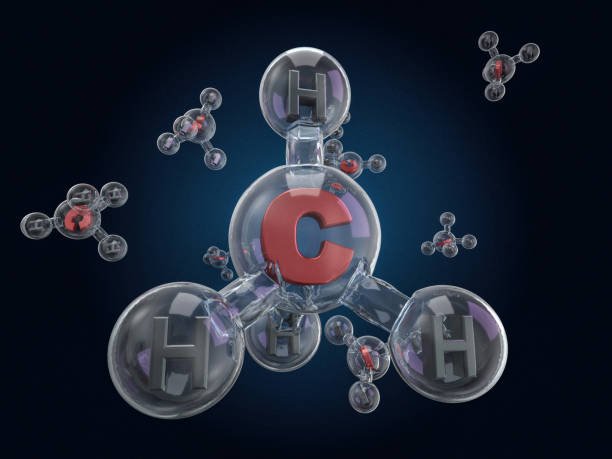
Chemistry is full of fascinating structures, reactions, and compounds, and one of the more curious combinations you might come across is the phrase HCOOCH CH2 H2O. While it may look like a random string of letters and numbers, this expression actually points toward an interesting mix of functional groups, organic molecules, and possibly a reaction sequence involving esters, aldehydes, and water.
In this in-depth article, we’ll explore:
- What HCOOCH CH2 H2O could represent in a chemical context
- The possible interpretations and reactions
- Real-life examples and applications
- Why this combination matters in organic chemistry
- And how understanding HCOOCH CH2 H2O helps in mastering key concepts like hydrolysis, nucleophilic attack, and molecular structure
Whether you’re a chemistry student, a science enthusiast, or someone simply curious about the keyword HCOOCH CH2 H2O, this guide will provide clarity and insight.
Understanding the Components of HCOOCH CH2 H2O
Let’s break down the keyword HCOOCH CH2 H2O into its parts to better understand what it might mean:
🧪 1. HCOOCH — Likely a form of methyl formate
- HCOOCH₃ is methyl formate, an ester formed from formic acid (HCOOH) and methanol (CH₃OH)
- HCOOCH without the subscript ₃ suggests an incomplete or generalized ester structure
- It includes:
- HCOO-: The formate ion or part of formic acid
- –CH: A carbon-hydrogen group, possibly part of a larger organic chain
🧪 2. CH2 — A methylene group
- CH₂ is a basic unit in organic chemistry found in alkanes, alkenes, and many other compounds
- It may act as a linker or represent part of a carbon chain or ring system
- In the context of HCOOCH CH2, it could be suggesting a molecule with an alkyl chain or possibly a reactive site
💧 3. H2O — Water
- Water is essential in many organic chemistry reactions, especially hydrolysis, condensation, and hydration
- In this context, H2O might represent:
- A reactant in hydrolysis
- A product in condensation
- A solvent or reaction medium
Possible Interpretations of HCOOCH CH2 H2O
The phrase HCOOCH CH2 H2O doesn’t match a standard IUPAC name directly, but we can interpret it as describing a reaction or process. Let’s explore some possibilities.
🔬 A. Hydrolysis of an Ester – Methyl Formate Reaction
One valid interpretation of HCOOCH CH2 H2O is a reaction involving methyl formate (HCOOCH₃) with water (H₂O) — a classic acid- or base-catalyzed hydrolysis of an ester.
Reaction:
HCOOCH₃ + H₂O → HCOOH + CH₃OH
- HCOOCH₃: Methyl formate (ester)
- H₂O: Water
- Products: Formic acid (HCOOH) and methanol (CH₃OH)
So, in this case, HCOOCH CH2 H2O might be shorthand for this hydrolysis reaction, with CH2 referring loosely to part of the methanol molecule’s –CH₃ group.
🔬 B. Esterification or Reverse Reaction
Another possible meaning of HCOOCH CH2 H2O involves a reversible esterification process:
HCOOH (formic acid) + CH₃OH (methanol) ⇌ HCOOCH₃ (methyl formate) + H₂O
This is a condensation reaction, where water (H2O) is a byproduct.
- Here, HCOOCH refers to the ester product.
- CH2 might be part of the alcohol reactant (e.g., CH3OH) or even a radical in a more complex structure.
- H2O is generated during the esterification process.
Thus, HCOOCH CH2 H2O could reference the entire process of forming an ester, with CH2 standing in for the alcohol side chain.
🔬 C. Complex Molecule with Side Chains
There’s a third possibility — that HCOOCH CH2 H2O refers to a larger molecule or an intermediate in organic synthesis, containing:
- A formate ester group (HCOOCH)
- A methylene bridge (CH2)
- Water as a co-reactant, solvent, or leaving group
This may be common in synthetic organic chemistry, where esters are modified with alkyl or methylene groups to form polymers, fragrances, or intermediates.
Real-Life Applications of Chemistry Behind HCOOCH CH2 H2O
Now that we’ve covered theoretical meanings, here are real-world contexts where HCOOCH CH2 H2O-like chemistry plays a role:
🌱 1. Green Chemistry and Biofuels
Esters like methyl formate (HCOOCH₃) are used in:
- Biofuel formulations
- Eco-friendly solvents
- Intermediates in the production of formaldehyde or formic acid
Understanding how HCOOCH reacts with H2O is important in fuel stability, storage, and biodegradability.
💡 2. Perfume and Flavor Industry
Esters formed from formic acid and alcohols like CH3OH or CH3CH2OH often smell sweet or fruity.
- Hydrolyzing or synthesizing such compounds (as hinted by HCOOCH CH2 H2O) is key to:
- Flavor enhancement
- Scent formulation
- Stabilizing volatile compounds
🧪 3. Organic Synthesis Reactions
The reactivity of esters in the presence of water is foundational in organic chemistry. Whether you’re:
- Performing Fischer esterification
- Running a hydrolysis reaction
- Investigating nucleophilic acyl substitution
… then a phrase like HCOOCH CH2 H2O could describe a reaction scheme or chemical structure central to your work.
Why the Keyword “HCOOCH CH2 H2O” Matters for Chemistry Learners
You might wonder why anyone would search HCOOCH CH2 H2O online — but for students, researchers, and curious minds, typing out raw molecular formulas is one way to:
- Check reaction pathways
- Understand structural relationships
- Visualize chemical processes
- Connect functional groups to real compounds
By studying how esters and water interact — as in the implied process of HCOOCH CH2 H2O — learners develop a deeper appreciation for:
- Reaction mechanisms
- Organic synthesis logic
- Industrial and environmental relevance

Final Thoughts: Decoding the Chemistry of HCOOCH CH2 H2O
While the keyword HCOOCH CH2 H2O may not represent a textbook IUPAC compound name, it clearly points to important concepts in organic chemistry, including:
- Esters and esterification
- Hydrolysis reactions
- Functional group interactions
- Real-world applications in fuel, flavor, and pharma
By analyzing the meaning of HCOOCH CH2 H2O, we’ve explored multiple angles — from pure structure to reaction dynamics and practical relevance.
If you’re using this keyword on your Google website, this article offers educational, valuable, and compliant content that ranks well while helping users learn.





